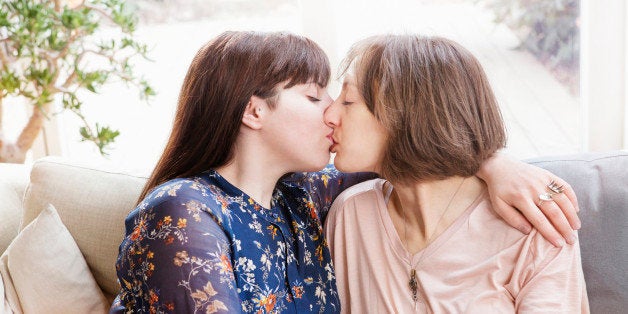
Now that marriage equality is the law of the land in the United States, I hope we can acknowledge that this influx of couples eager to embrace marriage can also change the institution of marriage--for better.
Here are five ways that LGBT couples already are changing fundamental ideas and assumptions about marriage.
1. Butch and femme are not tied to gender
Butch and femme, or masculine and feminine respectively, are terms that describe ideas, approaches, aesthetics, values, or mannerisms. They are broad terms used to evoke playful and expansive modes of being for queer people. What queer people know--and heterosexual people can learn--is that butch and femme are not tied to gender. Men and women can be butch or femme and even butch and femme. These terms and the practices of living the imagine are not fixed, either to a particular sex or gender or to a particular minute, hour, or day of the week. Butch and femme wax and wane over a lifetime. Butch and femme, masculinity and femininity, are capacities for expression. We all have them and use them at different times to suit the circumstances of our lives and relationships as well as our own internal desires. Unlocking butch and femme from gender creates more space for joyful expressions in our world.
2. Divide labor without regard to gender
Marriage is a lot about labor. Who is doing what, when? Who is buying the milk? Who is taking out the garbage? Who is cleaning the kitchen, the cat litter, the toilet, the shower? Who is paying the bills? Who is depositing a paycheck? Too often we think that particular forms of labor are tied to gender; for example, we might believe that women are better suited to cleaning the kitchen, while men are better suited to mowing the lawn. While to many these ideas now seem quaint, queer folks have known for a long time that labor is not tied to gender. Everyone has different skills and capacities, and everyone can learn different types of labor. Marriages are successful when the labor split is negotiated, without any biological imperatives. LGBT couples can provide models for how to divide labor--all types of labor: physical, reproductive, emotional, spiritual--without regard to gender.
3. Marriage and monogamy are not necessarily intertwined
There is nothing about marriage that says the partnership must be monogamous. There are a lot of cultural messages that say marriage and monogamy are linked indelibly, but successful LGBT relationships demonstrate otherwise. For decades, queer folk have been organizing their sexual and erotic lives outside the constraints of marriage and demonstrating that various types of commitments and consensual relationships can overlap and co-exist. Some people may want monogamy to be a central part of their marriage--they should talk about that desire and develop agreements to that effect with their spouse. Other people may not want monogamy to be to be a part of their marriage; they, too, should talk and come to an understanding. Commitments come in lots of different forms and evolve through honest communication.
4. Monogamy need not be absolute--it can be negotiated
Just like marriage and monogamy need not be intertwined, monogamy is not absolute. Some people are monogamous at particular junctures in their relationship and non-monogamous at other moments. Life is long; conditions change; feelings morph. Flexibility helps us humans to navigate the many challenges that life presents.
5. Intergenerational relationships need not be biological nor follow existing family models
Heterosexual marriage posits that the only intergenerational relationships are those bound by biology: grandparents, parents, and children. Queer marriages remind us that kinship networks offer intergenerational relationships not bound by biology. Friendships can evolve among people of different generations. Parenting can happen from people who are younger; elders can be childish. Relationships do not need to be shaped by existing family models--and often the strongest relationships are crafted outside of families. Defining and embracing new modes of relationships that challenge existing models is an exciting possibility for queer relationships of the future.
Now that marriage equality is the law of the land and LGBT couples can get married in every state--and have their marriage recognized in every state--let's talk about the radical new possibilities for living, learning, and loving together. Now that all of us--gay, straight, queer, and questioning--are in the world on equal footing, let's make changes to how we organize our families and our affections in ways that recognize all of our varied needs and desires.
